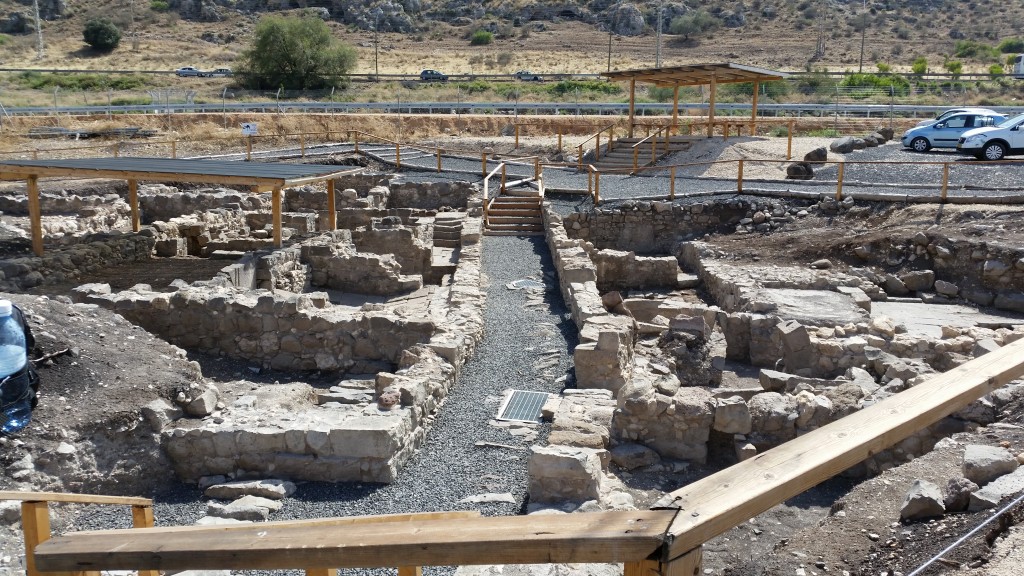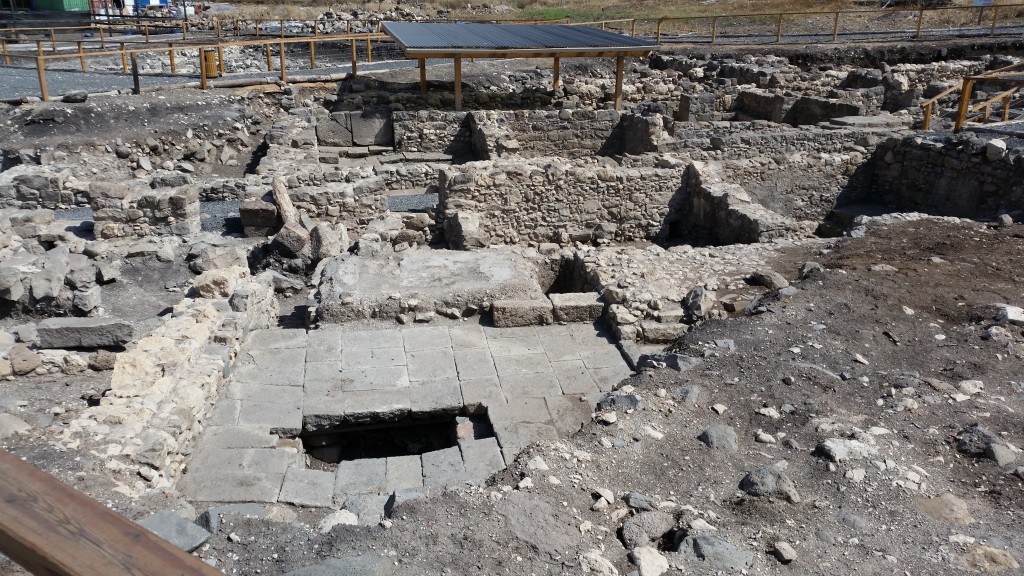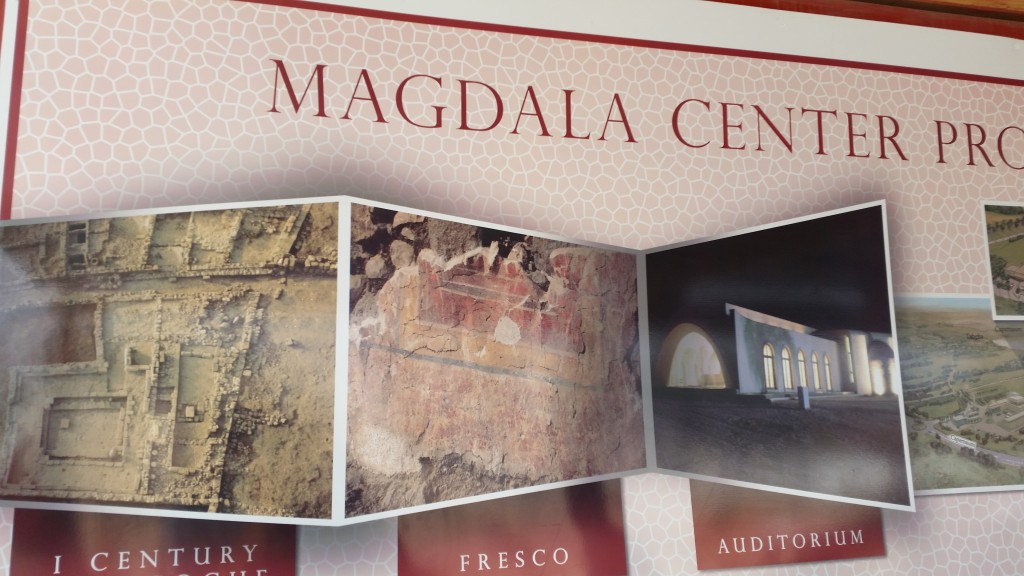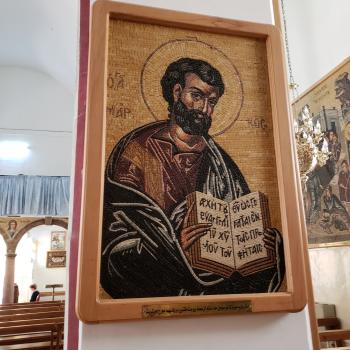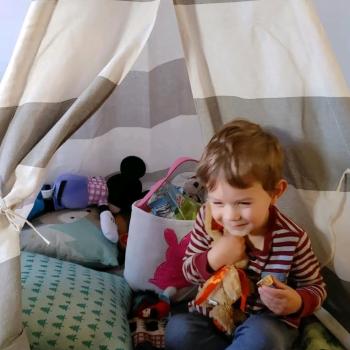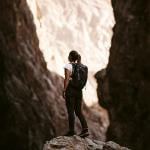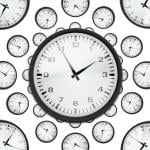Our next place to visit is Migdal or Magdala, the hometown of you know who. Our previous mental image of a quaint little impoverished fishing village has been completely blown out of the water by the recent excellent archaeological work done on this site. Kudos to the team. My group was fortunate enough to have Richard Bauckham (who was there at the time) to come give an excellent lecture on what has been found at Migdal…. which is to say, a considerable synagogue (which Jesus may have visited– the most likely way he came into contact with Mary of Migdal), a fish factory (yes you heard right) of considerable size, as well as an impressive walled city. On to the site, which is partially controlled by the Franciscans (and you can’t see their part— they are building a tourist hotel at the present, anticipating many visitors). Here’s the big sign welcoming us to the site…
What created the initial sensation in the media about this dig was the finding of a small elaborately carved stone table, now residing in Jerusalem, but the archaeologists were wise enough to produce an exact replica of it, for tourists to see on the site…. and here it is….first a picture to give you indication of the size of the table. There is still much debate about what it was for— maybe a table to roll out the scrolls on?
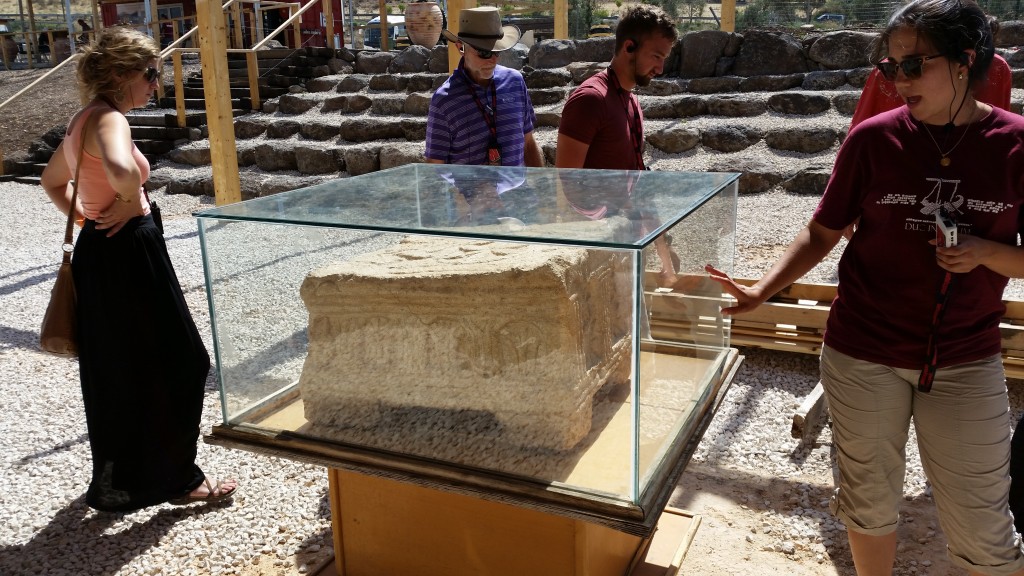
The images on the table are really quite stunning—
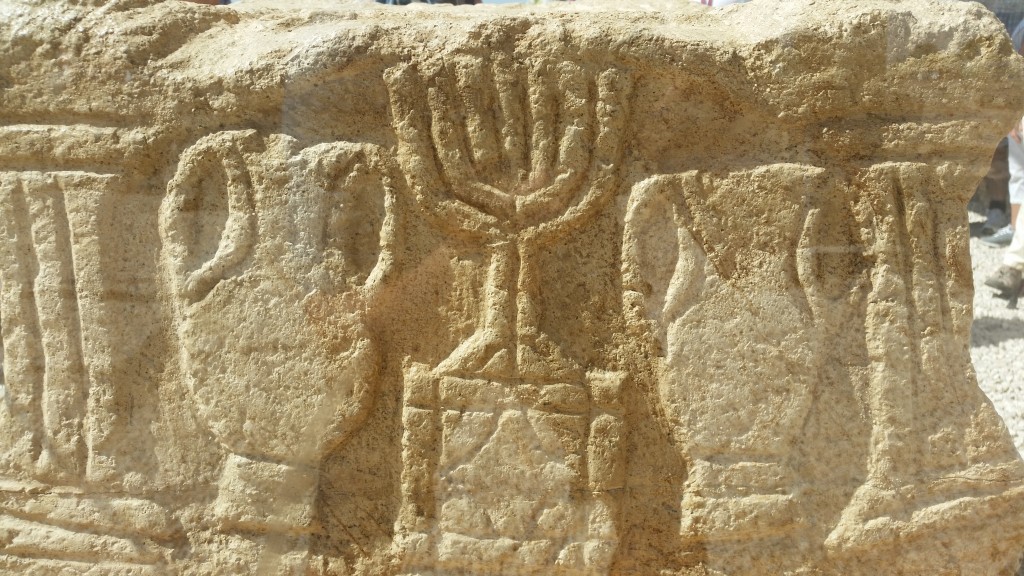
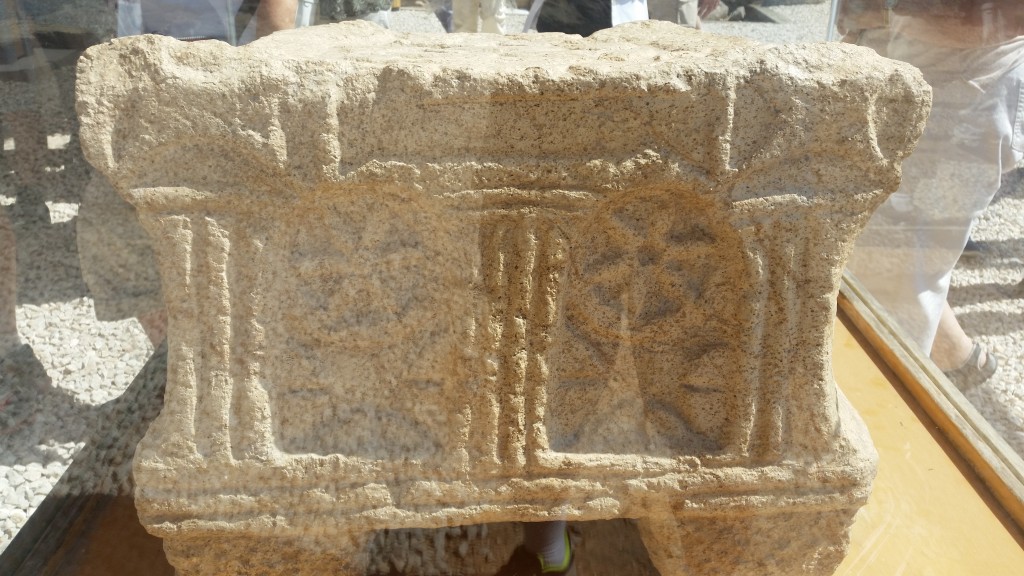
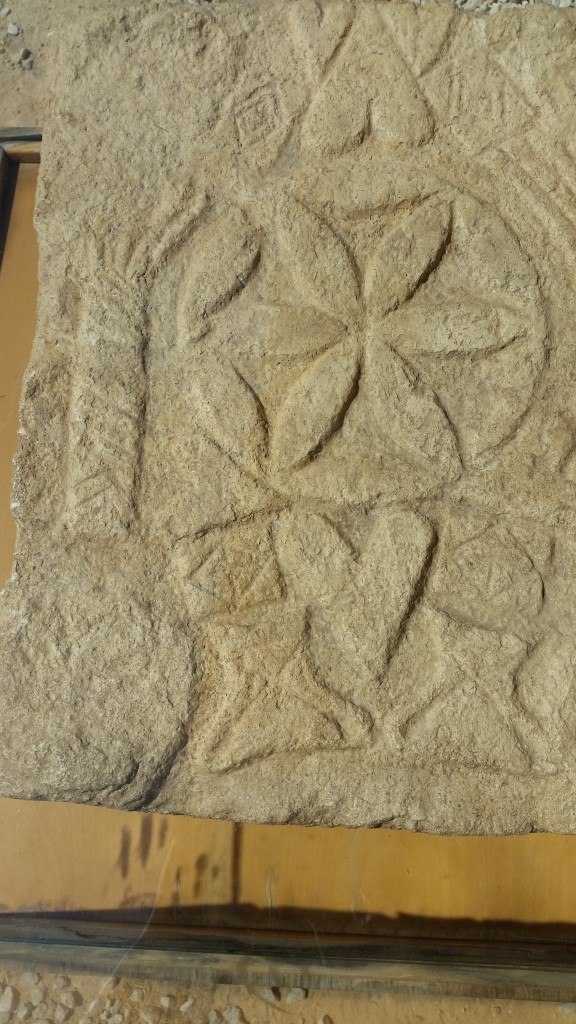
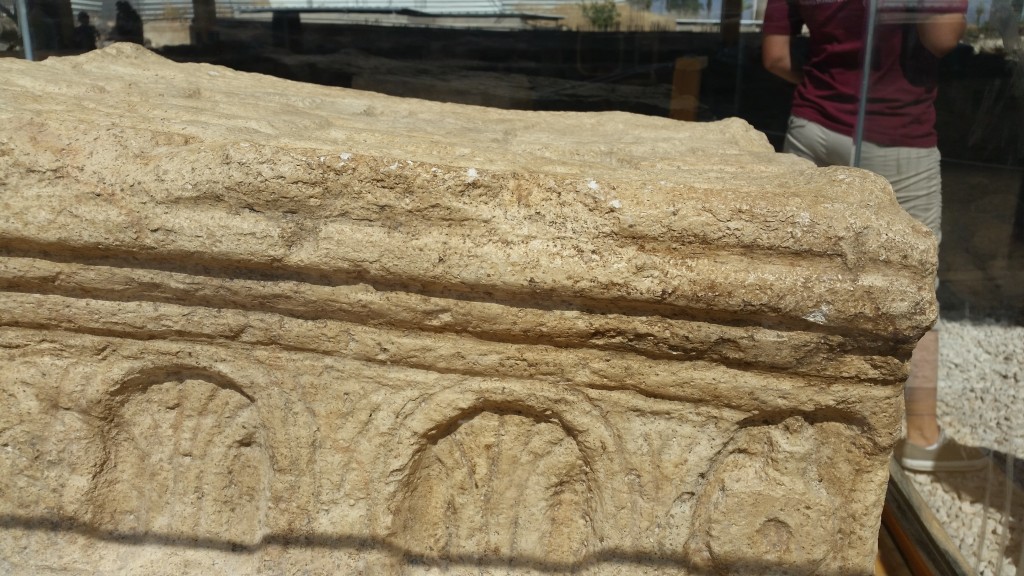
What we seem to see on this table, as Bauckham suggested, is images of and from the temple— hence the menorahs, the shewbread table, the arches, also some floral designs, columns, amphorae, and the like. This has raised interesting questions about the relationship between the synagogue and the temple. Was the synagogue meant to be a surrogate for the temple, at least in some respects, for those who lived far from the temple?
As for the synagogue itself, it has a mosaic floor, and here are several images of it. Notice again the tiered seating.
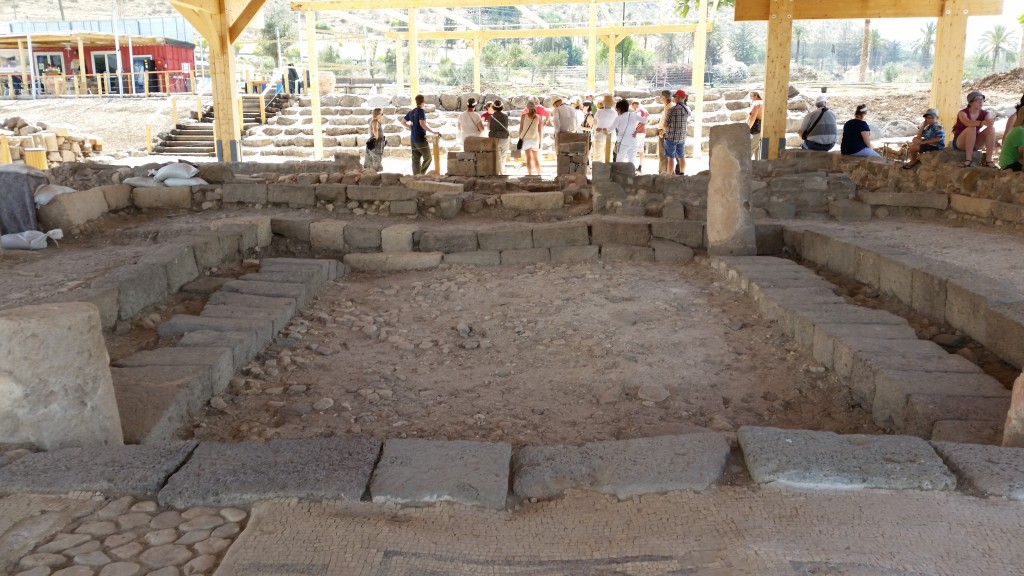
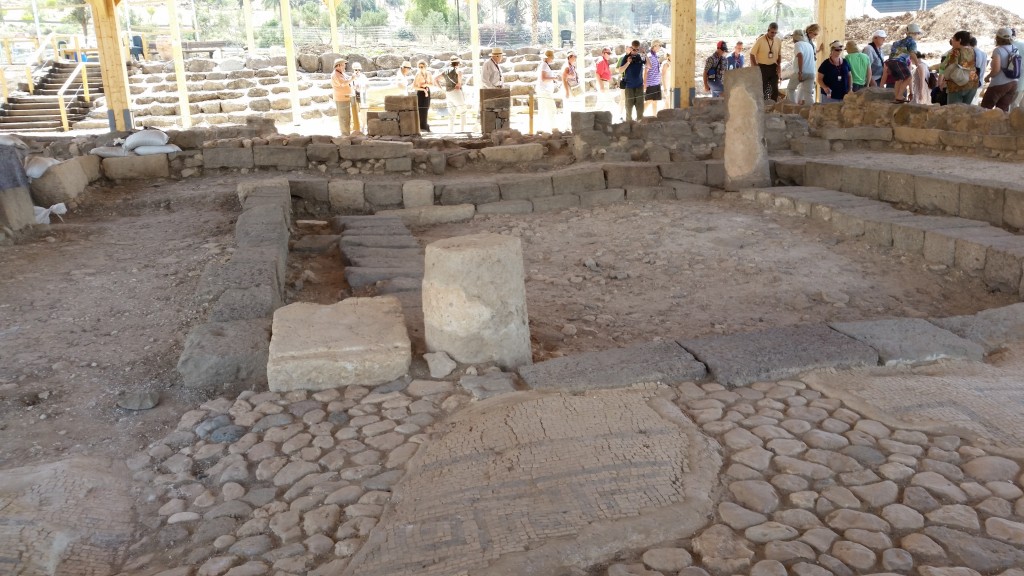
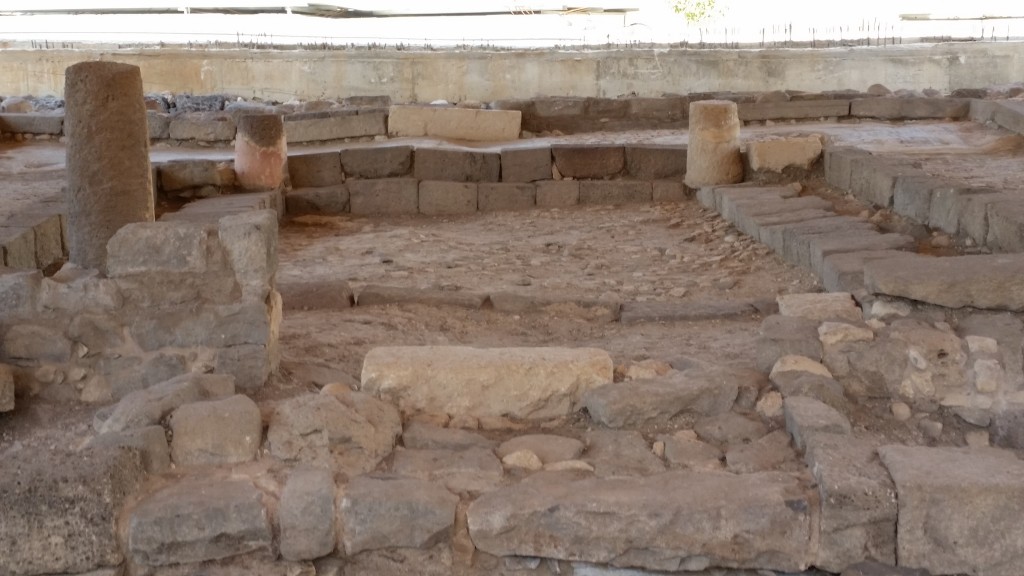
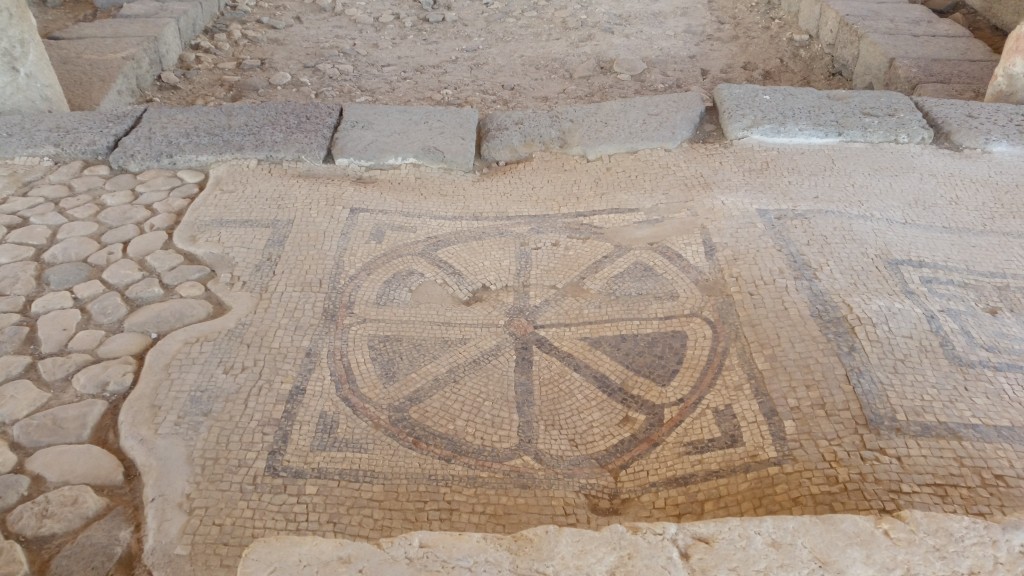
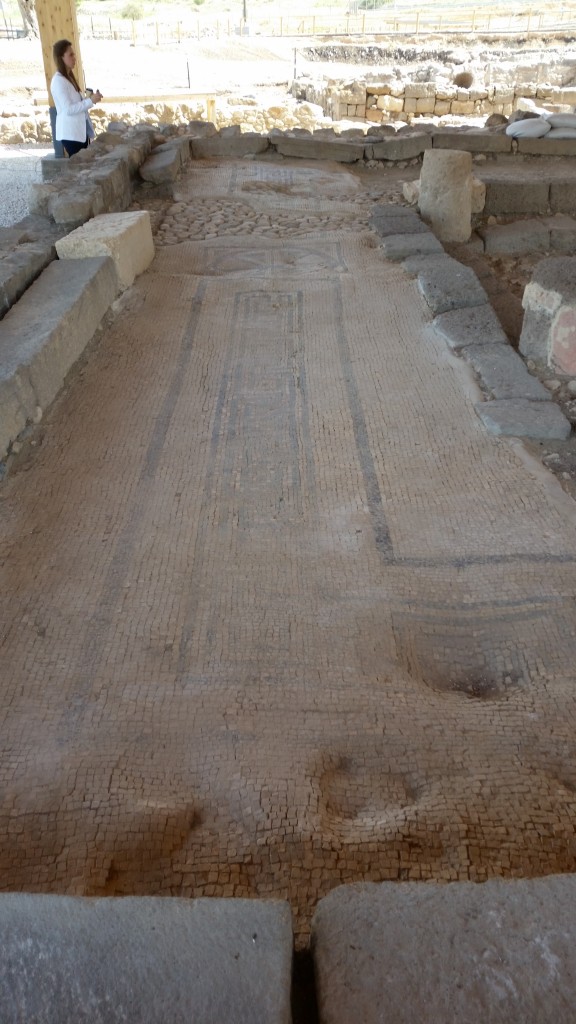
The archaeologists suggest that this synagogue was not the main one for the city, but perhaps was on the outskirts of town. More importantly they suggest that it was a public hall in the midst of other town buildings and served various purposes including as a synagogue. I am not at all sure about this last theory. Would one leave one’s scrolls and synagogue table etc. in a public building where it could be readily defiled? I am doubtful about that. Here however is a picture that shows that the synagogue is in the midst of other buildings…
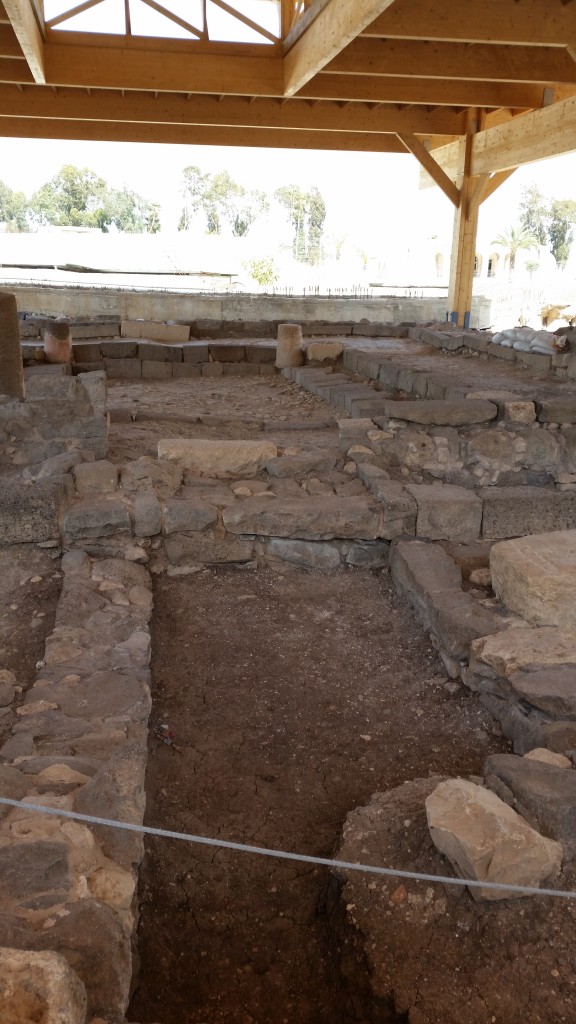
When the city was under attack, presumably during the Jewish war, the city gates were refortified. Here’s a shot of the things that were moved into place to protect the town,
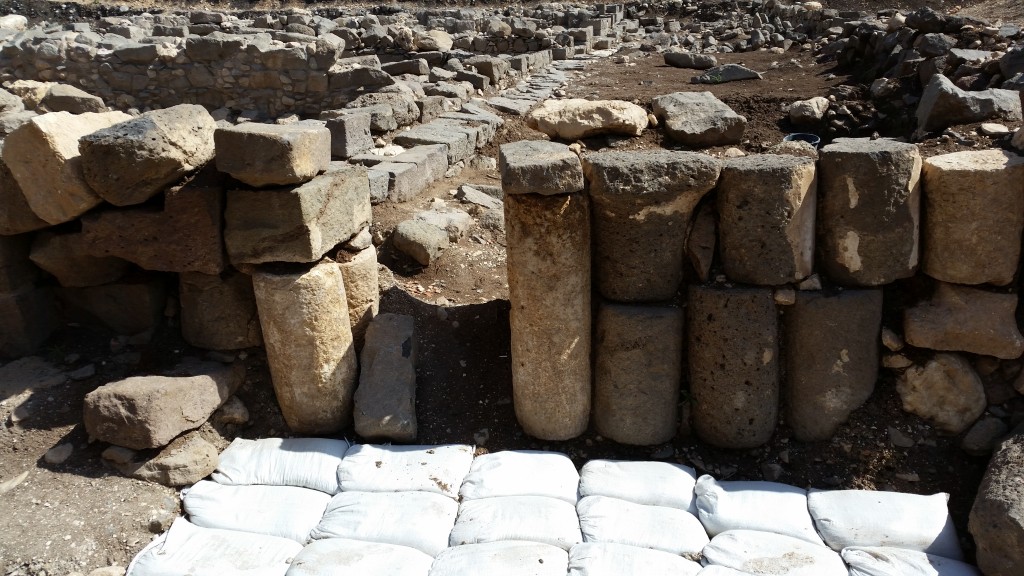
There are lots of buildings and residences to see on the site, and of course the remains of the fish factory as well…..